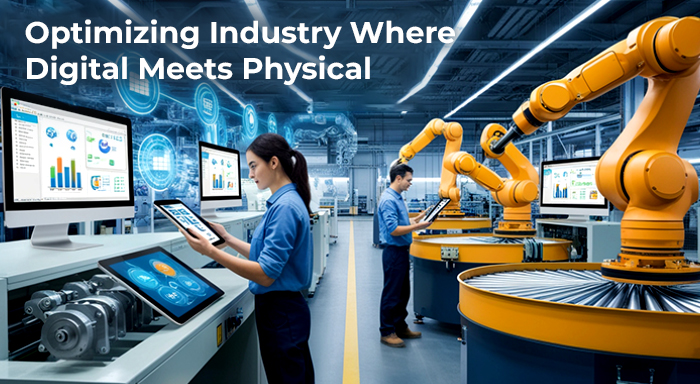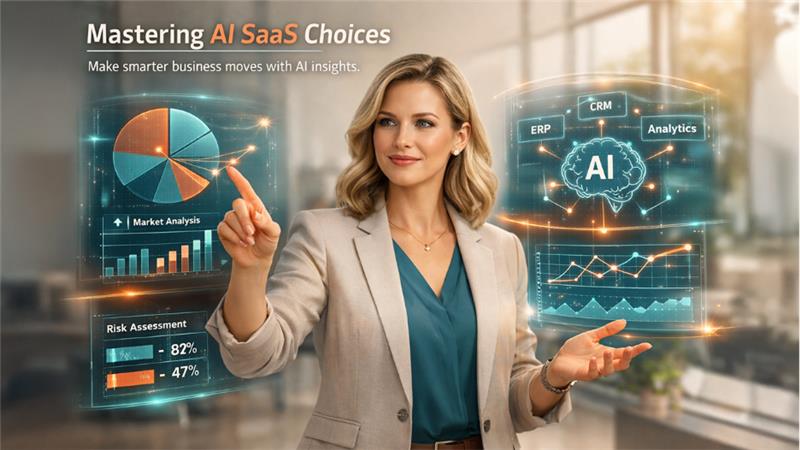Industries are transforming at an incredible pace, with digital tools and physical machines converging in ways we never imagined a few decades ago. From CNC machines to AI-powered systems, technology is reshaping how businesses operate, and the line between the digital and physical worlds is increasingly blurred.
In fact, this shift is not just a trend- it’s a revolution, creating new opportunities for companies to enhance efficiency, cut costs, and improve product quality. However, finding the right balance between online tools and physical machines is critical.
It’s this mix that will help define modern industrial strategies, making concepts like Industry 4.0 and smart manufacturing a reality. So, let’s dive into the evolution of this hybrid model and how it’s changing the industry’s future.
The Evolution of Industry: From Physical to Digital
Industrial history has always been about technological advancement. It started with mechanization during the First Industrial Revolution, moved into mass production with assembly lines, and later, automation transformed factories in the 20th century.
The foundation of every industry has traditionally been physical machinery, and every new development aims to decrease manual work and boost productivity. It was the advent of digital tools that truly changed the game. Early systems like CAD (Computer-Aided Design) and ERP (Enterprise Resource Planning) software allowed businesses to digitally manage their resources and design processes.
Soon, predictive maintenance software followed, helping industries monitor machine health and reduce downtime. These milestones marked the beginning of a shift from traditional mechanical processes to integrated systems that combined the power of physical machinery with digital capabilities.
The Role of Physical Machines: The Backbone of Production
Physical machines have always been the foundation of industrial production. Even as digital tools revolutionize our work, physical equipment like CNC machines remains essential to manufacturing. Through the creation of precise parts, product assembly, and high levels of uniformity, these machines do the heavy lifting—both literally and figuratively..
In fact, a CNC lathe and turning center are excellent examples of how modern machines have evolved to meet today’s production needs. They allow for precise cutting, shaping, and drilling of materials, offering flexibility and scalability in manufacturing. By using digital inputs, they automate complex tasks that once required manual intervention.
Additionally essential to preserving a steady workflow are physical machines. The physical execution of activities depends on sturdy, dependable machinery, even while digital technologies can direct operations and offer real-time data. For industries that depend on high-volume output, having the right machines ensures a steady, efficient production line.
Online Tools in Industry: The Digital Revolution
The digital revolution has brought about significant changes, particularly in how businesses manage operations and analyze data. One of the most impactful developments has been the rise of cloud computing and Software as a Service (SaaS) platforms.
These tools allow businesses to store data in the cloud, collaborate in real-time, and manage processes from anywhere worldwide. Not to forget, everyone nowadays is talking about AI and machine learning. They are essential to data analytics and predictive maintenance, enabling businesses to automate repetitive tasks and make data-driven decisions.
For example, AI can analyze equipment performance data to predict when maintenance is needed, reducing downtime and increasing operational efficiency.
Likewise, The Internet of Things (IoT) enables remote monitoring, automation, and the creation of smart factories. It provides valuable insights into performance and maintenance needs.
Achieving the Right Balance: Digital and Physical Synergy.
Businesses need to mix digital technologies and physical machinery to optimize productivity. Both are necessary, but successful integration can increase manufacturing flexibility, save costs, and increase productivity. Here are a few ways businesses can achieve this synergy:
- Automation with Flexibility: Physical machines, like CNC lathes, can perform repetitive tasks with high precision, while integrated digital systems allow for quick adjustments in design or production without retooling the entire machine.
- Real-Time Data Monitoring: IoT sensors on physical machines can send data to cloud-based systems, allowing for real-time monitoring and decision-making. This helps optimize performance and reduces downtime through predictive maintenance.
- Customizable Production: Digital tools like CAD software can integrate with physical machines to produce highly customized products without sacrificing efficiency. This is especially useful in industries where customer specifications change frequently.
For example, a manufacturer might use digital twin technology to simulate production processes before physically implementing them on the factory floor. This approach ensures that any potential issues are identified and addressed early, saving time and resources.
Similarly, a car manufacturer can use AI-driven digital platforms to adjust designs and send that information directly to physical machines for precision production. The real strength comes when digital and physical systems work together seamlessly.
To Sum It All Up
The future of the sector depends on finding the ideal balance between digital and mechanical tools. In the future, several trends will continue to support this balance. The rollout of 5G networks will enable real-time data processing and faster communication between machines and digital systems, improving operational efficiency.
Another new trend that lowers latency by processing data closer to the source is edge computing. This provides improved control over tangible assets and speedier decision-making. The secret to success, as firms continue to implement these hybrid systems, will be to make smart investments in technologies that improve both digital and physical capabilities.



